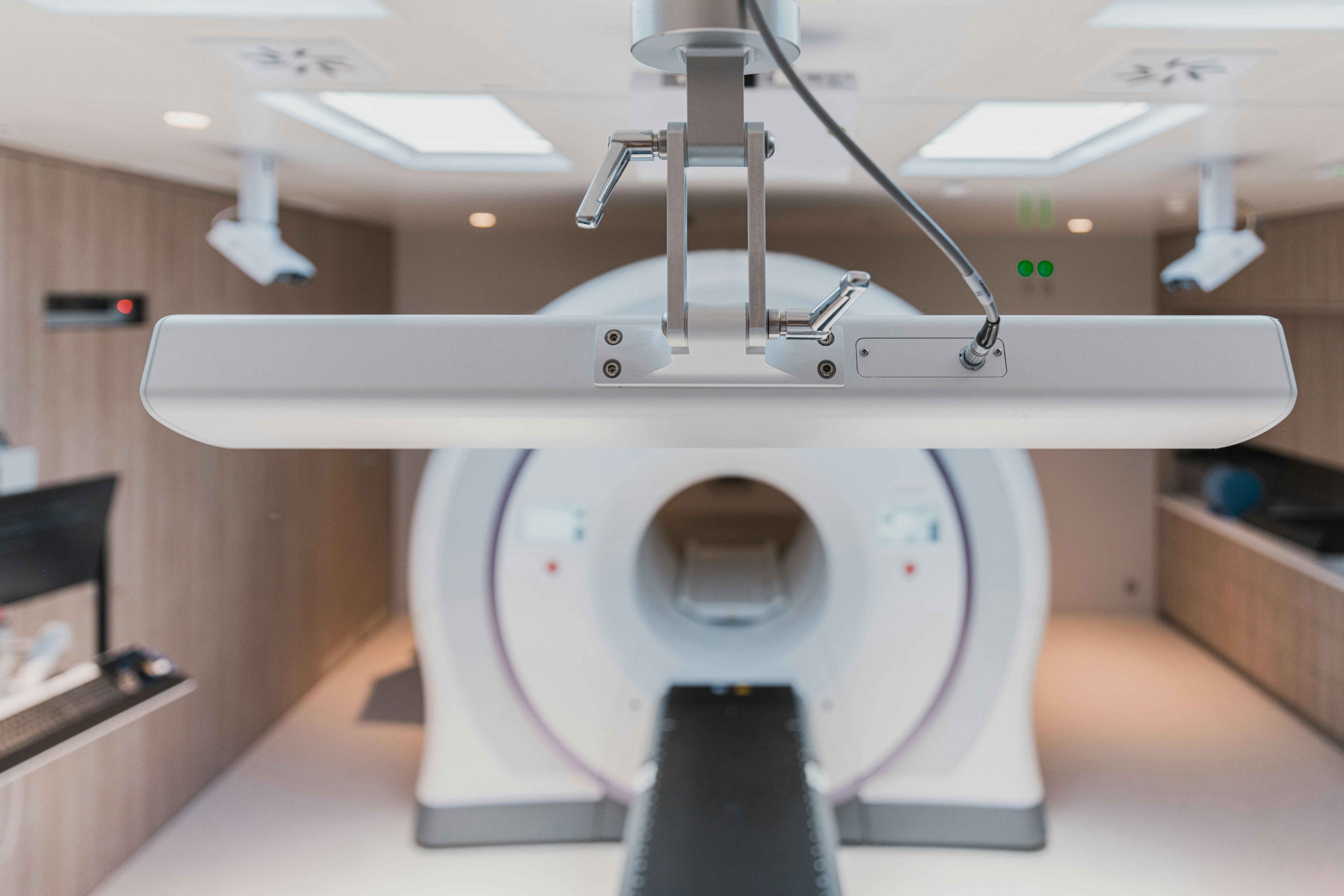The Future of Healthcare: Exploring the Latest Innovations in Spatial Imaging Techniques for Pharmaceutical Applications

Spatial imaging techniques have revolutionized the field of healthcare by providing a detailed understanding of anatomical structures and physiological processes within the human body. These techniques enable healthcare professionals to visualize and analyse data in three dimensions, leading to improved diagnosis, treatment, and overall patient care. Omics by Oxford Global explore the importance of medical spatial imaging, its applications in surgical planning and pharmaceutical research, the impact of Omics on spatial imaging techniques, the latest advancements in technology, the challenges and limitations faced, and the future prospects and potential of spatial imaging in healthcare.
Why is Medical Spatial Imaging So Important?
Medical spatial imaging plays a crucial role in the accurate diagnosis and treatment of various diseases and conditions. By providing detailed visualizations of anatomical structures, such as organs, blood vessels, and tumours, healthcare professionals can identify abnormalities and plan interventions accordingly. Furthermore, spatial imaging techniques enable the assessment of physiological processes, such as blood flow and metabolism, aiding in the evaluation of disease progression and treatment response.
In addition to diagnosis and treatment, medical spatial imaging also contributes to patient safety by assisting in surgical planning. Surgeons can use spatial imaging to visualize the target area and surrounding structures, allowing for precise preoperative planning and reducing the risk of complications during surgery. This technology has transformed the field of surgical interventions, leading to improved outcomes and reduced patient morbidity.
Applications of Spatial Imaging in Surgical Planning
Spatial imaging has revolutionized surgical planning by providing detailed and accurate information about the patient's anatomy. Surgeons can now create three-dimensional models of the target area using spatial imaging techniques, such as computed tomography (CT) and magnetic resonance imaging (MRI). These models allow surgeons to visualize the exact location, size, and relationship of structures, enabling them to plan the optimal surgical approach and anticipate potential challenges.
Moreover, spatial imaging techniques also facilitate the use of image-guided surgery, where real-time imaging is used during the procedure to guide the surgeon. This approach enhances surgical accuracy and reduces the risk of damage to surrounding healthy tissues. By integrating spatial imaging into surgical planning, healthcare professionals can achieve better outcomes, shorter operating times, and improved patient satisfaction.
The Role of Spatial Imaging in Pharmaceutical Research and Development
Spatial imaging techniques have become indispensable tools in pharmaceutical research and development. These techniques enable researchers to study the distribution, metabolism, and elimination of drugs within the body, providing valuable insights into drug efficacy and toxicity. By visualizing the pharmacokinetics of a drug in real-time, researchers can optimize drug dosages, improve drug delivery systems, and enhance therapeutic outcomes.
Additionally, spatial imaging techniques play a crucial role in drug discovery and development. They allow researchers to assess the interaction of potential drug candidates with target molecules, aiding in the identification of promising compounds for further investigation. Spatial imaging also facilitates the understanding of disease mechanisms and the evaluation of drug efficacy in preclinical and clinical trials.
Omics and Its Impact on Spatial Imaging Techniques
The field of Omics, which includes genomics, proteomics, metabolomics, and other -omics technologies, has significantly impacted spatial imaging techniques in healthcare. Omics data provide valuable information about the molecular characteristics and functional aspects of tissues and organs. By integrating Omics data with spatial imaging, healthcare professionals can gain a comprehensive understanding of disease processes, identify biomarkers, and tailor treatment strategies to individual patients.
For example, by combining genomics data with spatial imaging techniques, researchers can identify genetic variations associated with diseases and visualize their effects on anatomical structures. This integration enables precision medicine approaches, where treatments are tailored based on the patient's genetic profile and disease characteristics. The synergy between Omics and spatial imaging holds great promise for advancing personalized medicine and improving patient outcomes.
Latest Advancements in Spatial Imaging Technology
The field of spatial imaging is continuously evolving, driven by advancements in technology and computational capabilities. One of the latest innovations is the development of high-resolution imaging techniques, such as ultra-high-field MRI and positron emission tomography (PET) with improved spatial resolution. These techniques provide unprecedented visualization of anatomical structures and functional processes, allowing for more accurate diagnosis and treatment planning.
Another significant advancement is the integration of spatial imaging with artificial intelligence (AI) algorithms. AI algorithms can analyse large datasets generated by spatial imaging techniques, identify patterns, and make predictions. This integration enhances the efficiency and accuracy of diagnosis, enables automated image segmentation and registration, and facilitates the extraction of meaningful information from complex imaging data.
Challenges and Limitations of Spatial Imaging Techniques
While spatial imaging techniques offer immense potential, they also face certain challenges and limitations. One of the primary challenges is the need for specialized equipment and expertise, which can limit access to these technologies in certain healthcare settings. Moreover, the interpretation of spatial imaging data requires extensive training and experience, as the complexity of the data can lead to misinterpretation and errors.
Another limitation is the potential for artifacts and distortions in spatial imaging data. Factors such as patient motion, metal implants, and image reconstruction algorithms can introduce errors and decrease the accuracy of the imaging results. Additionally, spatial imaging techniques often rely on the use of contrast agents, which can have potential adverse effects on patients, limiting their widespread use.
Future Prospects and Potential of Spatial Imaging in Healthcare
Despite the challenges and limitations, the future prospects and potential of spatial imaging in healthcare are promising. With ongoing advancements in technology and computational capabilities, spatial imaging techniques will continue to evolve, offering higher resolution, faster acquisition times, and improved image quality. These advancements will enable more precise diagnosis, personalized treatment planning, and monitoring of treatment response.
Furthermore, the integration of spatial imaging with other emerging technologies, such as virtual reality and augmented reality, holds great potential for enhancing healthcare delivery. These technologies can provide immersive experiences for healthcare professionals, enabling them to interact with spatial imaging data in real-time and improve decision-making during diagnosis and treatment.
Integrating Spatial Imaging into Healthcare Systems
To fully harness the potential of spatial imaging in healthcare, it's imperative to seamlessly integrate these techniques into existing healthcare systems and workflows. This integration necessitates collaborative efforts among healthcare professionals, researchers, engineers, and policymakers. They must work together to ensure the smooth adoption, standardization, and reimbursement of spatial imaging technologies across various healthcare settings.
Moreover, continuous training and education programs are vital to equip healthcare professionals with the requisite skills to effectively utilize and interpret spatial imaging data. These programs should be tailored to address the evolving needs of healthcare practitioners, providing them with comprehensive knowledge and practical training in spatial imaging techniques. By investing in ongoing education and training initiatives, healthcare systems can empower their workforce to leverage spatial imaging technologies to their full potential, thereby enhancing patient care and outcomes.
Conclusion and the Future of Spatial Imaging in Healthcare
Spatial imaging techniques have transformed healthcare by providing detailed visualizations of anatomical structures and physiological processes. With applications in surgical planning, pharmaceutical research, and personalized medicine, spatial imaging plays a crucial role in improving patient outcomes and advancing healthcare delivery. As technology continues to advance, the future of spatial imaging holds great promise for revolutionizing diagnosis, treatment, and overall patient care. By embracing these innovations and integrating them into healthcare systems, we can unlock the full potential of spatial imaging and shape the future of healthcare.
Join us for our monthly science exchange exploring the dynamic fusion of Spatial Biology & AI in Late Stage Clinical Development. Discover the cutting-edge intersection shaping the future of healthcare.








